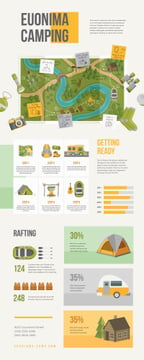Tips For Marketing Your Online Camping Tents Empire By Selling Camping Tents
Tips For Marketing Your Online Camping Tents Empire By Selling Camping Tents
Blog Article
Taking Photos of the Evening Sky
A variety of variables can affect night sky digital photography. From weather to upcoming celestial occasions, you'll want to plan ahead to guarantee success.
How do you survive a tent in the winter?
The shutter speed you select establishes whether celebrities appear as specific pin-points or route across the photo. A great general rule is to restrict the direct exposure to 500 seconds, or the matching of your lens's focal length.
Place
One of the most essential factors in an excellent photo is where you take it. Aim for areas with marginal light air pollution, and prevent areas that have brilliant city lights and high-rise buildings.
Also, look for a place that uses foreground components to produce structures with. As an example, dune patterns, wind-sculpted ridges and rough outcrops can all provide fascinating foreground aspects to aid tell the tale of your night skies photo.
It is also helpful to research study astronomical events such as meteor showers and lunar eclipses to make the most of possibilities for excellent pictures. Using a tool such as the Professional photographer's Ephemeris can be extremely beneficial when preparing your shoots. It helps you to identify moon stages, Milky Way setting and other astronomical occasions. Likewise, consider capturing in RAW format as opposed to JPEG as this provides you much more flexibility when refining the images. This is specifically true if you plan to publish your pictures.
Camera Settings
Obtaining the right electronic camera setups is essential for any type of photo, yet specifically so for evening sky pictures. A wide-angle lens is best for catching more of the Milky Way and minimizing star tracks, in addition to a longer shutter speed to stop the movement of celebrities and reveal their information.
For a maximum degree of clearness, shoot in RAW format as opposed to JPEG, which enables you to preserve more information and offers versatility during post-processing. This can likewise contribute to file size, so make certain you have lots of storage area and extra memory cards on hand.
Set your emphasis to hand-operated concentrating by turning the AF/MF turn on your lens right into MF mode. You might require to take a few test shots and examine the photo playback on your electronic camera's LCD display up until you accomplish perfect, pinpoint manual emphasis. It's an excellent concept to do this during the day with your selected fancy tent camping lens and the place you will be contending night, to confirm the precision of your emphasis setting.
Lights
A good night sky picture requires the appropriate conditions. This consists of a dark sky, however also an interesting foreground element such as a hill imminent, a lake to show the stars, or a human element like a barn or shed. You can also use a headlamp to illuminate the foreground and include some dramatization or deepness to your image.
The most crucial electronic camera settings for night skies photography are the aperture and shutter speed. The bigger the aperture, the a lot more light that reaches the sensing unit. This enables you to capture intense stars in a reasonably brief amount of time.
The shutter rate identifies whether your stars will certainly be pin-point perfect or if they will certainly appear as celebrity tracks due to the Earth's rotation. Make sure to take several lengthy direct exposure shots and pile them in post-processing for the very best outcomes. Finally, shoot in RAW mode to give on your own maximum latitude in post-processing.
Composition
The trick to gorgeous celebrity shots isn't a high-end telescope, a brand-new wide-angle lens or a top-of-the-line Canon or Nikon video camera. It's method, planning and composition.
For starters, search your shoot place in advance to get a feel for the design and prospective structures. Think about integrating foreground aspects such as rocks, a lake or alpenglow on the landscape to include character and rate of interest to your pictures.
Keep in mind the Guideline of Thirds when composing your images. This easy concept helps equilibrium and unify pictures. It's likewise beneficial for concentrating on sights in your picture, such as rock functions or the Milky Way. Also, remember to intend your shoots around moon stages-- shooting at a moon can subdue celebrities and create a silhouetted shape, while firing on nights with a new moon can assist you see constellations extra clearly.
Who coined the term glamping?
